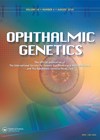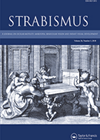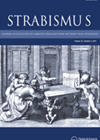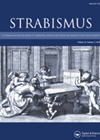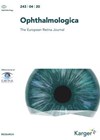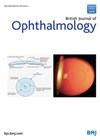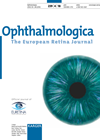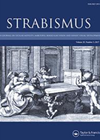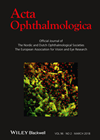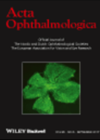
Journal Reviews
Myopia in Han Chinese
The authors present a case-control study of 361 patients with high myopia (mean spherical equivalent of -6.0DS or lower, and axial length greater than or equal to 26mm) and 749 healthy controls (mean spherical equivalent -1.0 to +1.0DS). They tested...
Prism adaptation test in acquired non-accommodative esotropia
This study investigated factors related to the increase in prism adapted angle in patients with acquired non-accommodative comitant esotropia (ANAET) who had strabismus surgery based on the results of a short prism adaptation test (PAT) and evaluated their outcomes. Short...
Ametropia prevalence and types in China
This study aimed to determine the prevalence and type of ametropia in Yunnan multi-ethnic regions. The study included 24,296 students aged 7-12 years (90.99%) in the study area of five different regions. There were 51% males and 32.2% minorities. Ametropia...
Changes in axial length and refraction in young Chinese school children
The authors aimed to assess refractive error and axial length in children aged seven to eight years (grades 1-2) starting education in South China. The study reviewed 301 students and obtained data for analysis from 291 (50.2% female). Average axial...
Surgical management of high myopia strabismus
This is a small case series of three patients with unilateral or bilateral high myopia with exotropia and hypotropia. Surgery involved nasal loop myopexy between the medial and superior recti muscles with or without lateral rectus recession and / or...
Microvasculature changes of mCNV after ranibizumab treatment using OCTA
In this study the authors aim to evaluate the vascular changes of myopic choroidal neovascularisation (mCNV) after ranibizumab treatment using optical coherence tomography-angiography (OCTA). The 3×3 OCTA en face images were analysed for the absence / presence of mCNV, CNV...
Longitudinal changes in axial length in high myopia
This is a prospective, longitudinal, observational single centre study between May 2011 and September 2018, to determine the changes in the axial length (AL) longitudinally in patients with high myopia without other conformational abnormalities. Patients were divided into two groups:...
Retinoschisis
In this retrospective study the authors evaluate the effect of pars plana vitrectomy (PPV) and internal limiting membrane (ILM) peeling for lamellar macular hole (LMH) with or without macular retinoschisis in highly myopic eyes. Twenty-one highly myopic patients (22 eyes)...
Knobby eye syndrome
This study used high resolution MRI to demonstrate and evaluate globe shape in axial high myopia and identify and characterise those with prominent equatorial staphylomata that deflect extraocular muscle paths and presumably alter motility patterns in strabismus. The study included...
Beware the disc in myopic patients
Glaucoma is a chronic and progressive optic neuropathy characterised by damage of retinal ganglion cells. Evaluation of structural damage of the optic nerve is important in glaucoma diagnosis. The ISNT rule states that the neuroretinal rim width is generally widest...
Reducing myopia progression
This paper reports a literature review to discuss the environmental considerations and treatment options that can prevent the progression of myopia, including time spent outdoors, reduction of near vision activities, spectacle types, contact lens type and pharmacological treatment. The review...
Self refracting – child’s play?
Uncorrected refractive error was the leading cause of vision impairment in the world in 2010. Although refractive error may be safely and effectively corrected with spectacles, lack of well-trained refractionists in settings of limited resources may be a major barrier....

